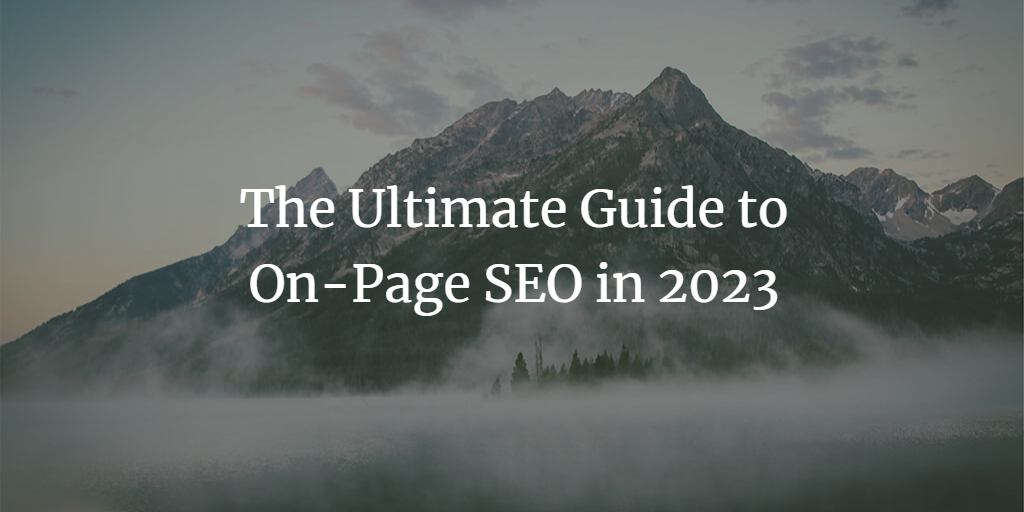
Table of Contents
Introduction
Keyword Research
Title Tags and Meta Descriptions
Headers and Subheaders
Content Optimization
Image Optimization
Internal Linking
Mobile Friendliness
Page Speed
Conclusion
Introduction
Welcome to the Ultimate Guide to On-Page SEO in 2023. In this comprehensive guide, we'll delve into the key on-page factors that search engines, like Google, prioritize when ranking websites. By the end, you'll be equipped with actionable insights to help your website soar in search results.
Keyword Research
Discovering the right keywords to target is crucial for on-page optimization. Follow these steps to find the perfect keywords for your content:
Brainstorm core topics related to your niche
Use keyword research tools to find long-tail keywords
Analyze keyword metrics (search volume, difficulty, and intent)
Create a master list of target keywords
Title Tags and Meta Descriptions
The title tag and meta description are essential components of on-page SEO. Here's how to optimize them:
Write a unique and engaging title that includes your target keyword
Keep your title tag within 60 characters to avoid truncation
Craft a compelling meta description that summarizes your content
Include your target keyword in the meta description and keep it under 155 characters
Headers and Subheaders
Well-structured content is key to user experience and SEO. Use headers and subheaders to break up your content and improve readability:
Use H1 tags for your main header (there should only be one H1 tag per page)
Break your content into sections using H2 and H3 tags
Include your target keyword in H1, H2, or H3 tags where relevant
Content Optimization in 2023
To create high-quality, SEO-friendly content, follow these guidelines:
Write in-depth, informative, and engaging content that satisfies user intent
Use your target keywords strategically but avoid keyword stuffing
Add LSI (Latent Semantic Indexing) keywords to provide context to your content
Break up large blocks of text with bullet points, lists, and images
Image Optimization
Optimizing images is essential for enhancing user experience and SEO. Follow these best practices:
Use descriptive file names and include your target keyword when appropriate
Compress images to reduce file size without sacrificing quality
Add alt text to describe the image and include your target keyword when relevant
Internal Linking
Internal linking helps search engines understand your site's structure and spreads link equity across your site. Implement these strategies:
Link to relevant content within your site to keep users engaged
Use descriptive anchor text that matches the linked content
Avoid over-optimizing anchor text with exact-match keywords in 2023
Mobile Friendliness
With mobile-first indexing, having a mobile friendly website is crucial for SEO. Follow these tips to ensure your site is optimized for mobile users:
Use a responsive design that adapts to different screen sizes
Ensure text is legible and buttons are easy to tap on mobile devices
Optimize page speed for faster loading times on mobile
Page Speed
Page speed is a ranking factor, and faster-loading sites provide a better user experience. Use these tactics to improve your site's loading time:
Minify CSS, JavaScript, and HTML files
Leverage browser caching to store static files
Optimize images and use next-gen image formats like WebP
Implement a Content Delivery Network (CDN) for faster delivery of resources
Conclusion
Mastering on-page SEO is essential to help your website rank higher in search results. By following this ultimate guide, you'll be on your way to achieving better visibility and driving more organic traffic. Remember, search engine algorithms constantly evolve, so stay updated on the latest trends and best practices to maintain your site's SEO performance.


